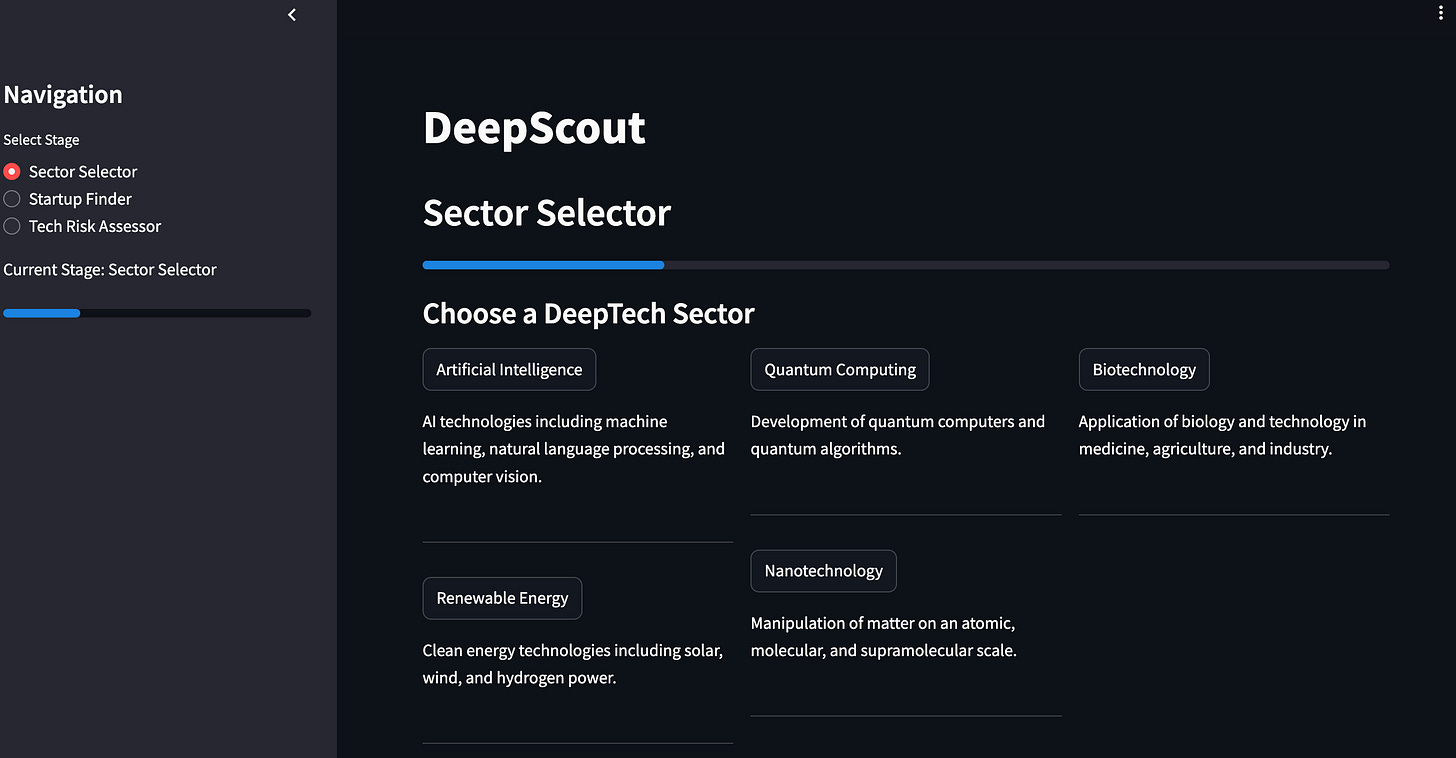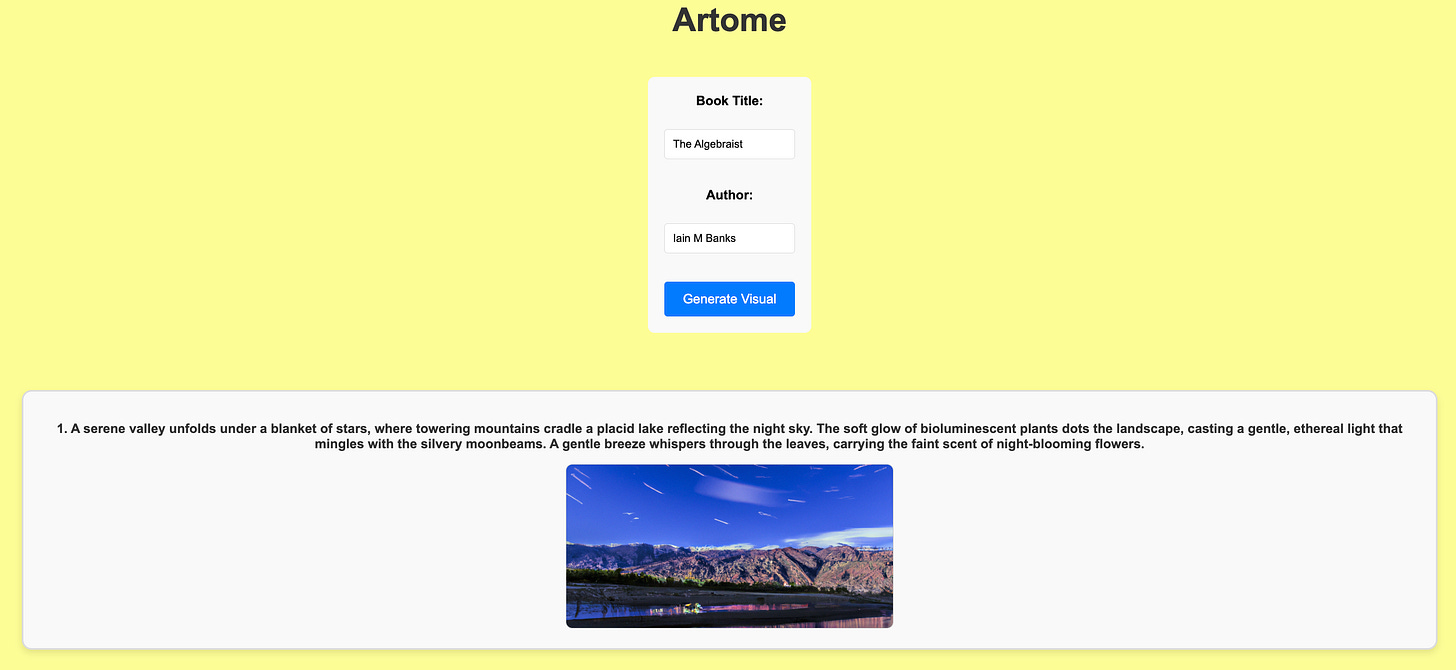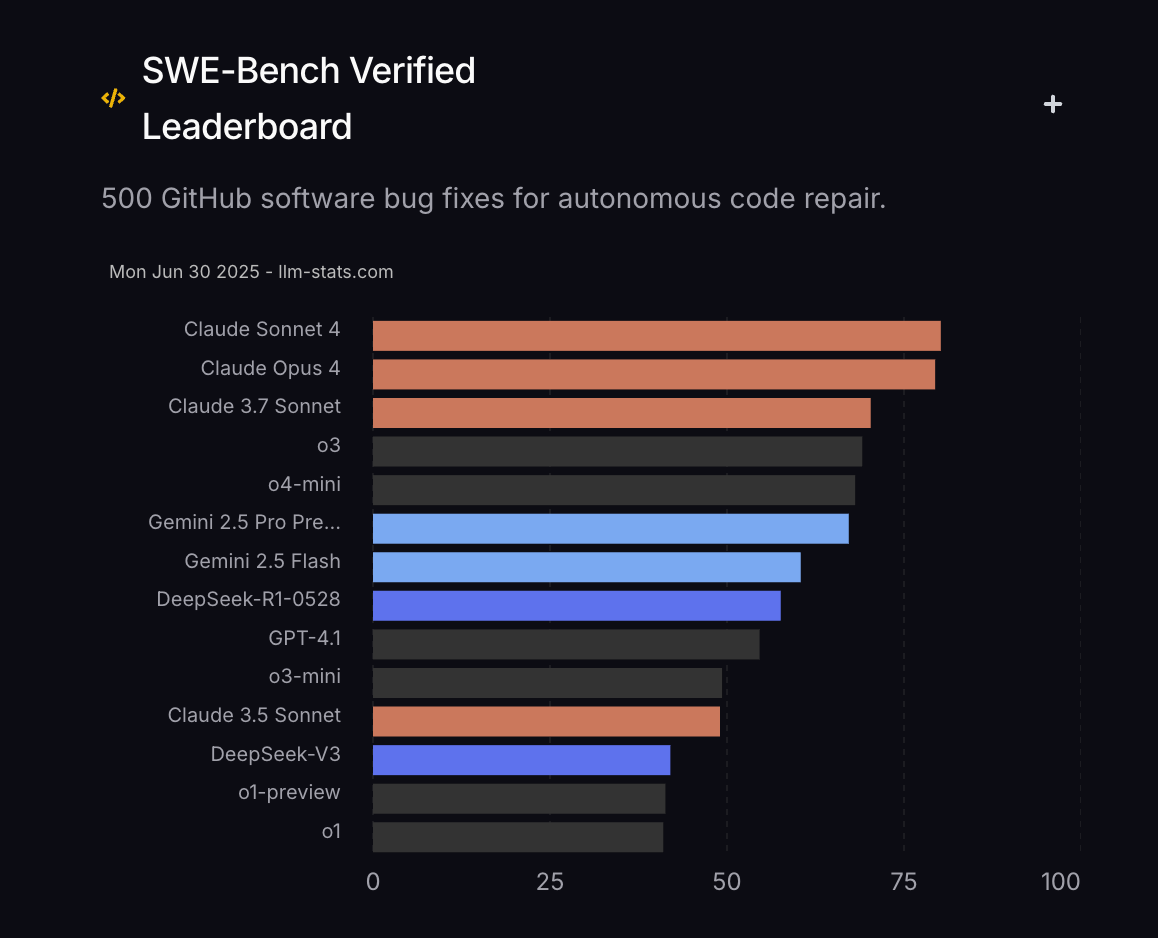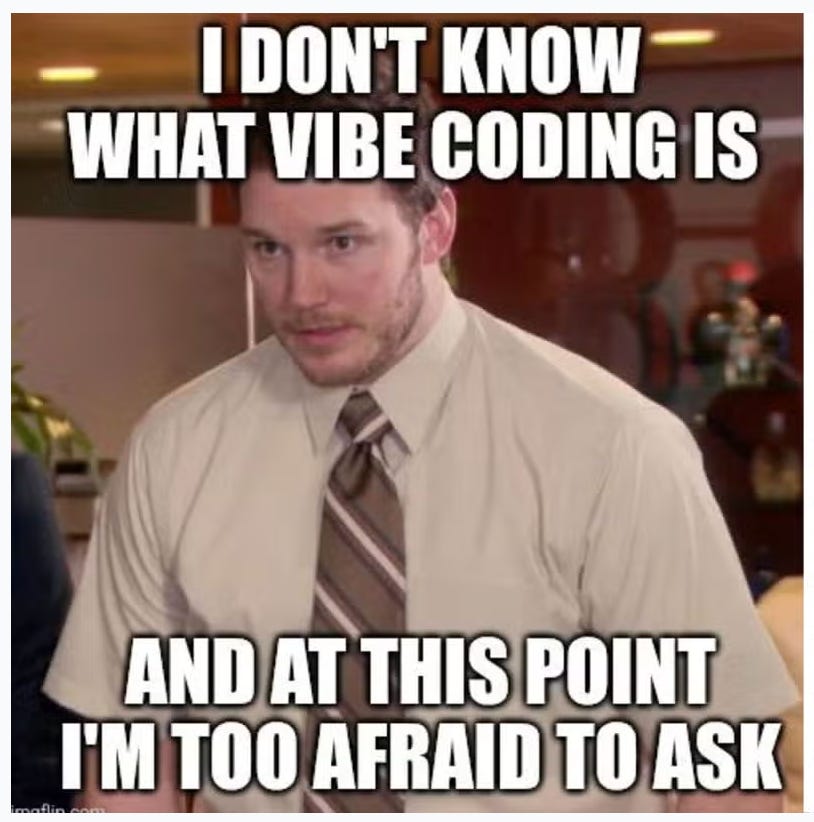Its 'Agency' Not 'Agents' That Matter in the Age of AI
My personal journey of discovery with vibe coding using Replit, Cursor, Windsurf and why everyone needs to build agency now
I am built different. I was always the odd one out at school, at university, at workplaces. Despite being the odd one I got through the grind, attending decent schools, universities and workplaces.
But the cubicles, the open plan hallways, the rectangular grey and glass buildings never inspired me. The institutions with their rules and authority always felt oppressive.
I found solace and felt a kindred soul hanging out with the misfits. They were my tribe. The misfits and the rebels is where I belonged.
I craved agency - something the existing system doesn’t encourage. Whether it’s school, university or the workplace, you are meant to look through the lens of someone else and adopt their constructed reality.
You know what I mean. Many of us live it daily and suffer it in the quiet moments.
Something tells me that the human civilisation might have just found a way out by creating AI.
The time for agency is here. And its available to everyone right now.
For a moment, unhook yourself from the constructed reality that is the news and social media.
AI is all about agency - not agents.
The coming age of AI will build and scale agency across the crumbling landscape of constructed reality.
I was one of those NPCs (non-playing characters) consuming and plugged into constructed reality - believing that the world was headed to hell in a hand basket.
The AI, robots, climate change would all lead us, and our children to doom. The ‘doomer cult’ had consumed me.
But then ChatGPT released and a memetic movement called e/acc (effective acceleration) emerged out of nowhere, both around the same time.
e/acc was about agency - it questioned the doomer cult and was the rebel force against the empire. e/acc was about building vs destroying. The energy was centred around abundance, creativity and positivity. I realised quickly that this was the red pill for me. I am still a proud ‘e/acc’ and spread their message wherever I go.
What is agency? It is the power to live your life on your own terms.
My Journey into Vibe Coding and finding Agency
I discovered agency with the help of AI. Below are my Github contributions over the past year. You can literally see how agency came into being.
Coding is not all that new to me. I have double Engineering Masters degrees. I also did coding in my spare time in Python as I was up-skilling on AI/ML, and back in my engineering days was able to cook up C/C++, Java and VHDL code pretty regularly. My graduate thesis was physically building a custom supercomputer and programming Xilinx FPGA boards in VHDL to solve an industrial manufacturing optimisation problem.
I was taught code from first principles. I have a deep understanding of code due to my hardware engineering background as I learned assembly code, and so I can see code down to the level of where individual registers get written.
I still remember coming up with a breakthrough in one of my coding projects while watching the movie ‘The Matrix’ in the early 2000s in a cinema, as I could visualise which registers were not being written correctly, as the ‘keymaker’ was opening a backdoor.
So this wasn’t new at all - just that my coding skills had become rusty.
Around Sep 2024 I came across Replit and their Agentic solution. I started building things which popped in my head for fun - like this multi-agent simulation of agents vying for energy and resources.
I wrote my first real application and deployed it on a web server, thanks to Replit. It was called ‘DeepScout‘ to look for promising new deeptech startups using LLMs and then assess risk for investors.
If we go back - in early 2023 I was experimenting with AI code using ChatGPT. At that time, it was a laborious exercise, prompting ChatGPT to generate code, posting it on an IDE and then working through the errors. It wasn’t fun but gave me a glimpse of the possibilities.
I was able to build a full stack AI coded application called ‘Artome’ - an AI art generator for books. Enter your favourite book and author and it generates images depicting scenes from the book. I also connected Stripe payments and built a full authentication backend to go along with it, just for fun (in truth this is anything but fun!). I am a huge Iain M. Banks fan and have always wanted to visualise the books from the Culture Series.
By December 2024, I was demoing applications to PE Firms.
I moved on from Replit, which is a web-based IDE tool using agents to Cursor and Windsurf both which are local IDEs that live on your machine, and in my opinion give you much more flexibility and power to build code.
Don’t get me wrong - Replit is a great tool and has seen an improvement in performance over the course of 2025. But the one downside of Replit is that everything lives on Replit and is on the web, and so offers limited control. Performance is also dependent on your Internet connection or server load on Replit.
Replit is great for someone who is starting out on the coding journey, but Cursor and Windsurf really shine when it comes to building full-stack AI-generated applications. Both Cursor and Windsurf are IDEs which live and breathe on your local machine, and you can instantly pick up your coding even while stuck on a 12-hour long haul flight.
The real gear shift for me came in Jan 2025 when DeepSeek R1 was announced. It kickstarted a revolution in reasoning models prompting the US frontier labs Open AI and Anthropic to accelerate the release of their own reasoning models - o3 and Claude 4 Sonnet and Opus. Google also emerged from its slumber and is now amongst the leading AI model contenders with Gemini 2.5 Pro. All thanks to a nudge from the Chinese!
AI’s knack for writing code comes from scaling up LLMs and then tuning them with automated feedback, a breakthrough of the last few years. We’ve moved from RLHF (reinforcement learning from human feedback) to RL with automated feedback (also called RLAIF), so a pre-trained model now tweaks its weights by checking if its code compiles and passes the tests. Because code either runs or breaks, the reward signal is clear, letting models keep improving with more data and compute
On the latest software coding benchmarks ‘SWE bench’ we have already reached 80% levels, which means that a fully automated coding agent is not far. But, it also means that the 80% level allows all of us to become ‘vibe coders‘.
The AI 2027 paper suggests we will have super human agentic AI coders that will be able to do uninterrupted long horizon (a days full work) tasks by 2027. We are headed there without any major algorithmic or hardware breakthroughs.
The ‘no breakthroughs needed‘ is key here and something I also highlighted in my 2e30 blog post back in Oct 2024 - its time you recalibrate and start building agency.
My journey to discover agency blossomed when I embarked on my most ambitious project in early 2025. I conceived of an LLM based market intelligence tool for AI datacenter infrastructure. It struck me that there is an AI datacenter boom on the horizon but no one is really paying attention to the supply chain shifts that will create bottlenecks from energy, materials, transformers, cooling equipment, chips etc.
I have spent 20 years as a tech industry analyst researching trends, forecasting and writing research reports. These reports would typically take between 30-60 days to research and write. It was a laborious task, collecting data, building forecast models, interviewing people.
I wanted to test if majority of the heavy lifting of the research could be done by an LLM or agent, while the subject matter expert hones the final piece. And so I built a complex, multi-agent, AI DataCenter Signals Intelligence engine.
I built a scaffolding of LLM agents, prompts, cron jobs to collect data across 1500+ sources, analyse, collate, validate and then write a 100+ page report in a custom writing style. Try doing that with ChatGPT or even with DeepResearch. The level of individual flexibility that you have with the models, prompts, cost, output, top-p, temperature etc. gives you full control on the output that you desire. Off-the-shelf Deep Research tools on offer from Gemini, ChatGPT, Claude or Perplexity can never match what you can build with a custom tool.
Fast forward to today, I pivoted away from the report engine to an actionable intelligence dashboard. This is what AISIGINT is today, a LLM-powered, agentic, actionable intelligence system for AI datacenter stakeholders.
AISIGINT is a complex backend to frontend software stack using NextJS, Resend, MongoDB, Clerk, multiple LLM and LRM APIs - all of which can churn away for multiple hours searching for data, analysing and creating actionable intelligence insights for AI datacenter stakeholders. I have essentially automated the market research pipeline using vibe coding.
I could never have created AISIGINT without the help of AI coding tools. Even 12 months ago this would have meant hiring a bunch of frontend and backend developers and spending tens of thousands of dollars to build a PoC. I have built the full application and launched it in a matter of a few months all by myself. This is more than a PoC and can be easily described as a beta product launch. Let that sink in.
Don’t get me wrong. These tools are not magic. You don’t just write one prompt and voila a full fledged application gets created. This is where the ‘vibe’ in the vibe coding really shines. There is a point where you and the AI are in sync - one might call it a ‘flow state‘ but it is literally the AI being able to understand your instructions and you having an understanding of what the AI is building for you. Its man-machine synchronicity.
Over the course of working with multiple AI models and coding tools for many months, I have discovered multiple optimizations and tweaks that help me reduce errors and increase performance.
What is the vibe in vibe coding?
Many people ask me for a manual to learn vibe coding. This goes back to the way we operate in school and workplace. We leave agency behind and expect someone to give us the instructions. AI is not like that.
There is a point where you and the AI are in sync - one might call it a ‘flow state‘ but it is literally the AI being able to understand your instructions and you having an understanding of what the AI is building for you. Its man-machine synchronicity.
There is no manual for vibe coding and no one can teach you vibe coding. You have to immerse yourself in the practice.
As they say in Kung Fu you have to let the teaching come to you. Use your prompt window like an ‘empty cup’. Start with ‘Beginners Mind‘ a useful Zen koan.
Kung fu or any other martial art is more about practicing than fighting. You practice until each move feels effortless, letting your mind and body work smoothly together. When you stay fully present, movements flow naturally, guiding you into a state of complete focus and calm i.e. the flow state.
Vibe coding is similar. Instead of struggling with rigid syntax rules, you set a clear intention and let your ideas unfold naturally, supported by AI suggestions. Bugs and crashes become useful clues, helping you slowly adjust your path of travel. Like kung fu, vibe coding leads you into a flow state, where creativity, attention, and skill blend into a whole making each step feel easy and intuitive.
Age of AI is upon us - time to act now!
There are roughly two kinds of people. Those that like to follow and those that take the lead. Roughly every institution has pareto optimised for this. Its the 20% that bring about real change.
Its those 20% that will really lift the agency boat and run with it.
1. The first big shift will be in those 20% of people that already have agency will use AI to build new organisations, new communities, new countries (see Network State).
2. These new organisations will come in all shapes and sizes. From one person (million to billion dollar companies) to some sort of optimal size of org that is run by AI agents with humans there to guide them.
3. This will be followed by a small wave of the remaining 80% that will get inspired to join those that have built new foundations and will possibly realise at some point that they have agency and can build their own future. Essentially the pareto ratio will look more like a 50-50 ratio of half the population living with agency and half without.
4. For the rest of the people who don’t want agency they will be happy taking orders from the AIs and the humans that have agency. I don’t expect everyone to join the agency brigade.
The result is a world where you have a clear choice - either live on your own terms or live on someone else’s.
The AI’s will drive most of the economy both in raw bits and eventually in raw atoms as the robots come.
Humans will create, explore and do the things that they truly love doing.












